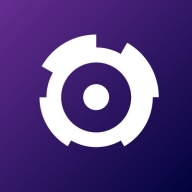

Splunk AppDynamics and ITRS Geneos are both competitors in the application performance monitoring and real-time monitoring space. Based on detailed feature comparisons, Splunk AppDynamics appears to have an edge with its comprehensive application ecosystem monitoring capabilities.
Features: Splunk AppDynamics provides detailed stack traces, deep dive monitoring, and end-to-end transaction analysis, offering JVM memory and hardware monitoring, application flow maps, and real-time performance analytics. ITRS Geneos excels in real-time monitoring with advanced integration capability and customization options for complex financial systems, fine-tuned for stability and performance across varied infrastructures.
Room for Improvement: Splunk AppDynamics could enhance its user interface by simplifying custom dashboard setups and expanding support for emerging technologies like cloud-native setups. Enhancements in asynchronous call tracking and a more intuitive licensing model could improve user satisfaction. ITRS Geneos would benefit from better historical data visualization tools, improved AI predictive capabilities, easier configuration, and stronger mobile integration.
Ease of Deployment and Customer Service: Splunk AppDynamics offers flexible deployment options across various cloud environments with rapid, industry-praised customer service for problem-solving. ITRS Geneos is predominantly on-premises, emphasizing stability in existing infrastructures, with solid customer service albeit a more challenging setup process compared to Splunk AppDynamics.
Pricing and ROI: Splunk AppDynamics is perceived as a costly investment due to necessary feature licenses, but the ROI is deemed substantial through enhanced visibility and troubleshooting, reducing downtime and operational costs. ITRS Geneos, also expensive, justifies its investment through its unique financial sector capabilities and offers pricing flexibility based on customer size, with ROI evident in preventing infrastructure failures and regulatory breaches.
| Product | Market Share (%) |
|---|---|
| Splunk AppDynamics | 4.1% |
| ITRS Geneos | 1.1% |
| Other | 94.8% |


| Company Size | Count |
|---|---|
| Small Business | 6 |
| Midsize Enterprise | 12 |
| Large Enterprise | 39 |
| Company Size | Count |
|---|---|
| Small Business | 55 |
| Midsize Enterprise | 36 |
| Large Enterprise | 188 |
ITRS Geneos is a real-time monitoring tool designed for managing increasingly complex, hybrid and interconnected IT estates.
Built with financial services and trading organisations in mind, it collects a wide range of data relating to server performance, infrastructure, trading, connectivity and applications, and analyses it to provide relevant information and alerts in real time.
Geneos can give full stack visibility across highly dynamic environments and presents all the information through a single pane of glass and its configurable and customisable dashboards provide end-to-end visibility to both technical and business users.
For more information, please visit https://www.itrsgroup.com/products/geneos
Splunk AppDynamics enhances application performance monitoring with advanced diagnostics and real-time insights, offering seamless end-to-end transaction tracking and infrastructure visibility.
AppDynamics provides critical tools for businesses to analyze application behavior and performance. Through innovative features like transaction snapshot analysis and adaptable dashboards, users can quickly identify and address issues, ensuring high levels of system uptime and efficiency. It is designed to support complex environments including Kubernetes and AWS, enhancing user experience by detecting performance issues early. Despite needing improvements in network monitoring and integration, it remains a robust option for tracking application health.
What are the key features of AppDynamics?In industries like financial services and e-commerce, AppDynamics facilitates performance tracking across distributed systems, optimizing infrastructure to meet consumer demands. It excels in environments needing precise transaction monitoring and is pivotal in delivering high value and satisfaction.
We monitor all Application Performance Monitoring (APM) and Observability reviews to prevent fraudulent reviews and keep review quality high. We do not post reviews by company employees or direct competitors. We validate each review for authenticity via cross-reference with LinkedIn, and personal follow-up with the reviewer when necessary.